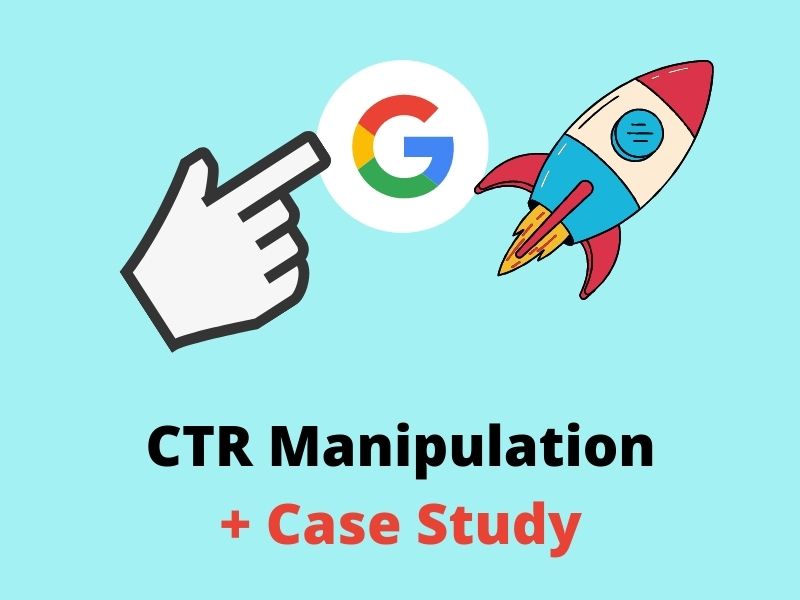Transform Your Ad Campaigns With Targeted CTR Control
Effective ad projects pivot on the ins and outs of click-through price (CTR), a vital statistics that reflects audience involvement. Targeted CTR manipulation, informed by information analytics, offers an avenue to improve how advertisements link with possible customers.
Comprehending Click-Through Rate
What makes a click-through price (CTR) an essential metric in electronic advertising? CTR is the percentage of individuals that click a certain web link out of the total variety of customers that view an ad or a page. It acts as an essential indicator of the performance of on-line advertising and marketing campaigns, showing just how well the web content resonates with the target audience. A high CTR suggests that the advertisement is appealing and relevant, while a low CTR indicates a need for optimization.
Recognizing CTR makes it possible for online marketers to evaluate the performance of different campaigns, ad layouts, and targeting approaches. It enables for benchmarking against industry criteria, giving understandings into locations that might need enhancement. In addition, CTR plays an essential role in seo (SEARCH ENGINE OPTIMIZATION) and pay-per-click (PAY PER CLICK) advertising, influencing quality ratings and overall exposure in search results page.
Significance of Targeted CTR

Moreover, targeted CTR manipulation permits online marketers to fine-tune their methods based upon audience behavior and preferences. By examining information, services can determine which sections respond positively to particular material types and adjust their campaigns appropriately. This precision results in much more impactful messaging and higher conversion rates.
Additionally, targeted CTR fosters brand name commitment. When consumers obtain pertinent and attractive material, they are more probable to involve with the brand, building depend on and encouraging repeat interactions. Subsequently, organizations can cultivate enduring connections with consumers while boosting their general market presence. In summary, the value of targeted CTR exists in its capability to not just improve project effectiveness but likewise to produce meaningful links with audiences, leading the way for continual growth and success.
Strategies for CTR Adjustment
How can online marketers effectively control click-through rates (CTR) to attain desired results? Several methods can be utilized to enhance CTR, therefore maximizing the efficiency of marketing campaign.

2nd, the use of attractive visuals can substantially impact CTR. High-grade pictures or video clips that align with the advertisement's message can attract focus and timely users to click. Leveraging advertisement positioning purposefully on platforms where the target audience is most active can enhance exposure and interaction prices.
Third, customizing advertisements based upon customer actions and choices can generate better results. Using retargeting strategies, marketers can advise potential customers of services or products they formerly watched, hence enhancing the chance of clicks.
Lastly, enhancing for mobile is crucial, as a considerable portion of web website traffic originates from mobile phones. Guaranteeing advertisements are mobile-friendly can result in enhanced CTR and general project performance.
Analyzing Target Market Behavior
Understanding audience habits is critical for online marketers intending to boost click-through prices (CTR) and total campaign effectiveness. By delving into the motivations, preferences, and online habits of target audiences, online marketers can tailor their campaigns to resonate even more deeply with possible consumers.
Analyzing target market actions entails a number of vital look what i found elements, consisting of demographic evaluation, psychographic profiling, and user journey mapping. Demographic analysis offers understandings right into age, place, gender, and revenue, which can educate the style and messaging of ads. Psychographic profiling, on the other hand, reveals rate of interests, way of lives, and values, enabling online marketers to produce material that aligns with target market goals.
Customer trip mapping is essential for recognizing how possible customers connect with different touchpoints, from initial recognition to final conversion. By recognizing the stages where audiences engage or disengage, marketing professionals can optimize their methods to enhance CTR.

Determining Campaign Success
Determining campaign success is a critical part of any type of marketing approach, as it gives the needed insights to review performance and drive future decisions. To properly determine success, marketing professionals should establish clear, measurable objectives straightened with overarching organization goals. Trick performance indications (KPIs), such as click-through prices (CTR), conversion rates, and roi (ROI), function as important metrics in this procedure.
Tracking CTR particularly allows marketers to examine the effectiveness of targeted advertisement campaigns. A high CTR suggests that the advertisement reverberates with the audience, while a low CTR might require a reevaluation of targeting criteria, creative components, or messaging techniques. In addition, analyzing conversion prices provides much deeper insights right blog into just how well a campaign drives wanted activities, such as acquisitions or sign-ups.
Leveraging analytics tools can additionally boost measurement efforts, making it possible for real-time data monitoring and adjustments. Frequently reviewing project efficiency versus established standards guarantees constant improvement and optimization. Ultimately, a robust dimension approach not just highlights successes yet additionally reveals locations for improvement, leading the way for a lot more impactful and effective advertising and marketing initiatives in the future.
Conclusion
Finally, changing advertisement campaigns through targeted click-through price (CTR) adjustment requires a comprehensive understanding of target market internet behavior and effective messaging methods. By employing data-driven strategies, including A/B testing and customized visuals, projects can accomplish higher engagement and conversion prices. Evaluating psychographic and demographic understandings further boosts the ability to connect with the target market. Ultimately, these techniques add to raised brand name commitment and made the most of roi, emphasizing the importance of targeted CTR adjustment in digital advertising.
Effective ad campaigns pivot on the details of click-through price (CTR), a vital statistics that shows audience involvement. A high CTR suggests that the advertisement is appealing and pertinent, while a reduced CTR indicates a demand for optimization.
In summary, the importance of targeted CTR exists in its ability to not just improve project efficiency yet additionally to produce meaningful links with audiences, leading the way for continual growth and success.
A high CTR indicates that the ad reverberates with the audience, while a reduced CTR might require a reevaluation of targeting specifications, creative aspects, or messaging strategies.In final thought, changing ad projects with targeted click-through price (CTR) manipulation requires an extensive understanding of target market habits and reliable messaging techniques.